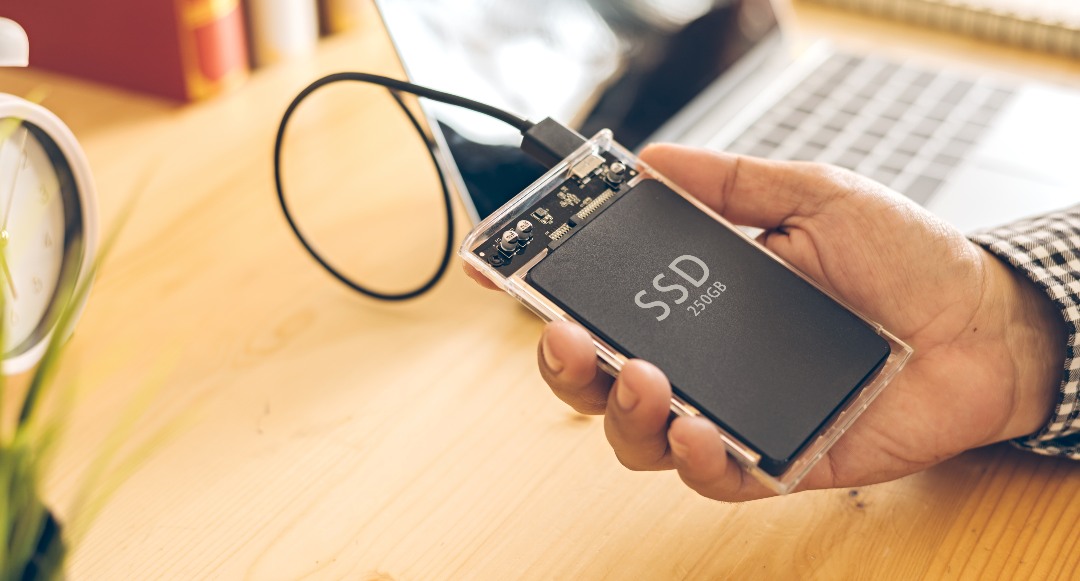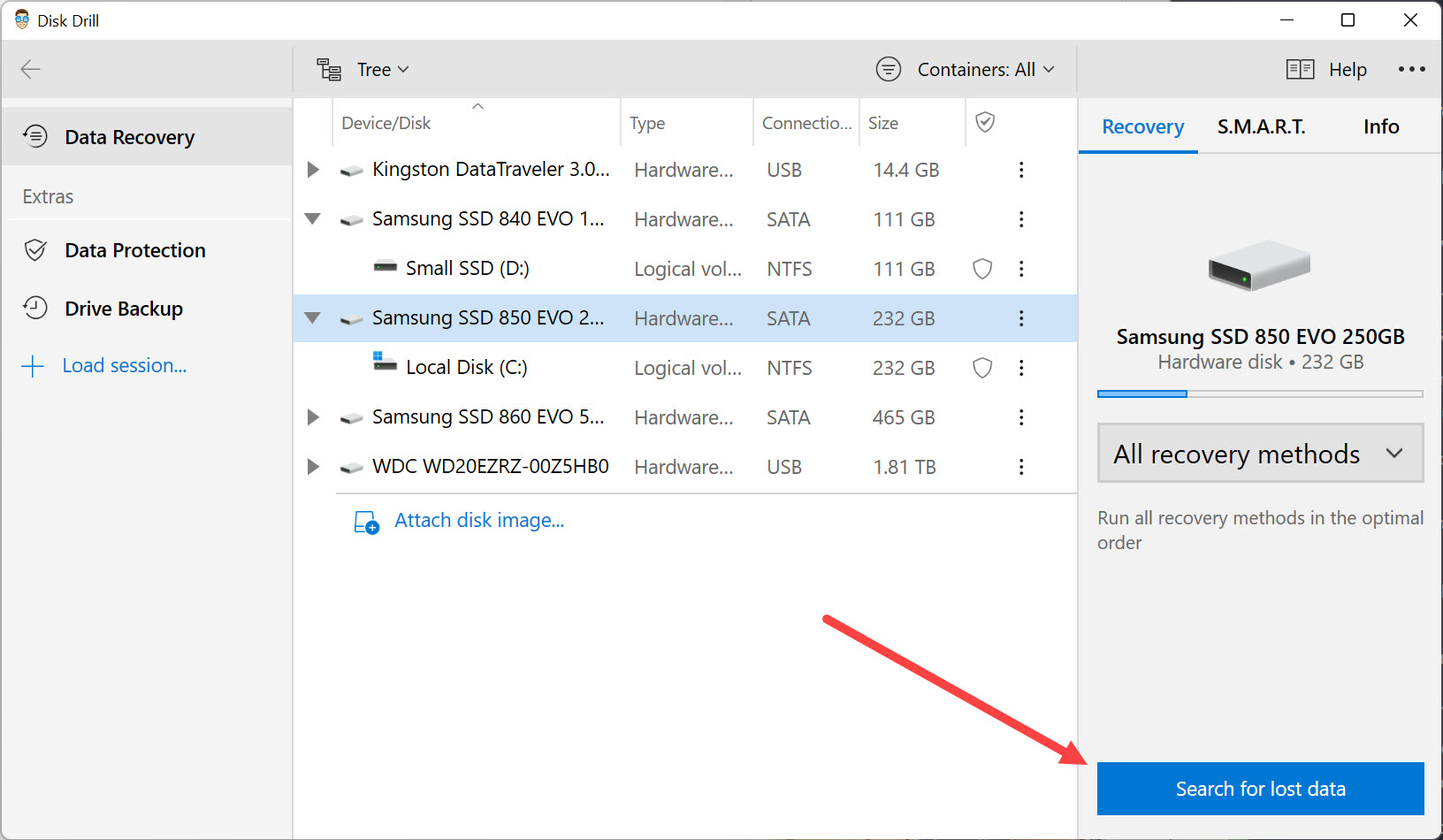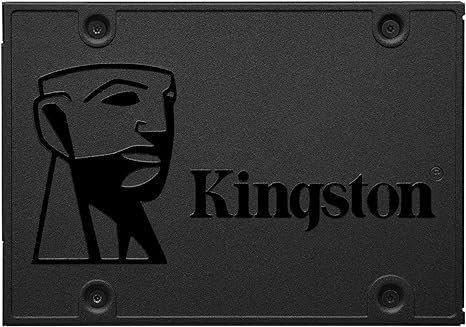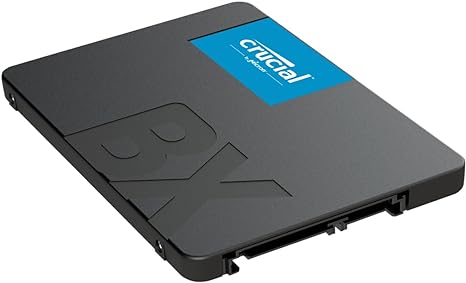To recover data from an SSD, you can use data recovery software or seek professional help. SSDs can fail due to various reasons such as physical damage, file system corruption, or accidental deletion.
Data recovery software like EaseUS Data Recovery Wizard or Recuva can help retrieve lost files from an SSD. If the software fails to recover your data, you can consult a professional data recovery service that specializes in SSD recovery. These experts have the tools and expertise to recover data from damaged or malfunctioning SSDs.
Remember to act quickly and avoid using the SSD to minimize the risk of further data loss.

Credit: www.cleverfiles.com
Introduction To SSD Data Loss
An introduction to SSD data loss is crucial for understanding the importance of data recovery. Solid State Drives (SSDs) are known for their speed and reliability, but data loss can still occur due to various reasons. In this section, we will explore the common causes of SSD failure and debunk myths about SSD data recovery.
Common Causes Of SSD Failure
SSD failure can result from various factors, including:
- Physical damage from drops or excessive shock
- Overheating leading to electronic component failure
- Power surges or electrical failures
- Manufacturing defects or firmware issues
- Excessive read/write cycles causing wear and tear
Myths About SSD Data Recovery
There are several myths surrounding SSD data recovery, such as:
- Myth: Once data is deleted from an SSD, it’s gone forever
- Myth: SSD data recovery is impossible after a firmware failure
- Myth: SSDs don’t require data recovery due to their reliability
- Myth: DIY SSD data recovery tools are as effective as professional services
Pre-recovery Steps
To recover data from an SSD, there are a few pre-recovery steps to follow. Begin by ensuring the SSD is not physically damaged, then use data recovery software to attempt to retrieve the lost files. If unsuccessful, seek professional assistance for more advanced recovery options.
Assessing The Ssd’s Condition
Before attempting data recovery from an SSD, it’s crucial to assess the drive’s condition. Look for physical damage, such as dents or scratches. Check for any unusual noises or odors emanating from the SSD. Also, consider the age of the drive, as older SSDs may have a higher likelihood of failure. If possible, consult the manufacturer’s documentation for any specific diagnostic tools or procedures recommended for assessing the health of the SSD.
Important Precautions Before Attempting Recovery
1. Make a complete backup: Before initiating any recovery process, ensure you have a backup of the SSD to prevent data loss due to any unforeseen issues during the recovery attempt.
2. Avoid further writes: Minimize any additional writes to the SSD to prevent overwriting the data you intend to recover.
3. Static protection: Handle the SSD in a static-free environment to prevent electrostatic discharge, which can cause further damage.
4. Use specialized recovery software: Only use reputable and specialized data recovery software that is designed for SSDs to avoid any potential damage to the drive or data.
5. Professional consultation: If the data on the SSD is critically important or the drive shows signs of physical damage, consider seeking professional assistance from a data recovery service.
By following these pre-recovery steps, you can maximize the chances of a successful data recovery from your SSD while minimizing the risk of further damage or data loss.
Software Solutions For Data Recovery
Choosing The Right Software
Look for reputable data recovery software providers.
- Check customer reviews and ratings.
- Ensure software is compatible with your SSD.
Step-by-step Guide To Using Recovery Software
- Download and install the software on your computer.
- Launch the program and select the SSD as the target drive.
- Scan the drive for lost or deleted files.
- Preview recoverable files and select those to restore.
- Choose a safe storage location for the recovered data.
Professional Recovery Services
Recovering data from an SSD requires professional recovery services. These experts utilize specialized tools and techniques to retrieve lost or damaged data from solid-state drives, ensuring the highest chance of successful recovery. Trusting professionals for SSD data recovery can help to minimize the risk of further damage and maximize the chances of retrieving important files.
When To Seek Professional Help
If you find yourself in a situation where your SSD has failed and you are unable to access your important data, it may be time to seek professional help. While there are some DIY methods you can try, such as using data recovery software, these may not always be successful, especially if the SSD is physically damaged. Here are some signs that indicate it’s time to consult a professional data recovery service:
- Your SSD is not recognized by your computer or is showing up as unallocated
- You accidentally deleted important files or formatted your SSD
- Your SSD is making unusual clicking or grinding noises
- You have experienced a power surge or other physical damage to your SSD
What To Expect From A Data Recovery Service
When you decide to entrust your SSD to a professional data recovery service, you may wonder what to expect from the process. Here is a breakdown of what typically happens when you seek professional help:
- Assessment: The data recovery service will evaluate the condition of your SSD and determine the best course of action.
- Quotation: They will provide you with a detailed quote outlining the cost of the recovery process.
- Recovery Process: If you agree to proceed, the experts will begin the recovery process, utilizing specialized equipment and techniques.
- Data Verification: Once the data is successfully recovered, they will verify its integrity to ensure the files are intact and accessible.
- Data Delivery: Finally, the recovered data will be securely transferred to a new storage device or provided to you via a secure download link.
Remember, the success of data recovery largely depends on the severity of the SSD failure and the expertise of the data recovery service. It is crucial to choose a reputable and experienced service provider to maximize your chances of retrieving your valuable data.
Diy Recovery Techniques
Recovering data from an SSD can be a daunting task, but with the right tools and techniques, it’s possible to retrieve your lost files on your own. Here’s a guide to DIY recovery techniques:
Tools You’ll Need
- External storage device
- SSD to USB adapter
- Data recovery software
- Computer with USB port
Step-by-step Guide To Diy Recovery
- Power off your computer and remove the SSD.
- Connect the SSD to a computer using the SSD to USB adapter.
- Install and run data recovery software on the computer.
- Select the connected SSD as the target drive for scanning.
- Initiate the scan and wait for the software to detect lost files.
- Preview the recovered files and select the ones you want to restore.
- Choose a location on the external storage device to save the recovered data.
- Complete the recovery process and safely eject the SSD.

Credit: www.cleverfiles.com
Preventing Future Data Loss
To prevent future data loss, it’s important to know how to recover data from SSD. Use reliable software and avoid attempting DIY methods that may cause further damage. Regular backups and security measures can also help prevent data loss.
Preventing Future Data Loss:
As technology advances, solid-state drives (SSDs) are becoming increasingly popular due to their speed and reliability. However, data loss can still occur, and it is important to take measures to prevent it from happening in the future. In this section, we will discuss some best practices for SSD care and backup strategies to safeguard your data.
Best Practices For Ssd Care
To ensure your SSD lasts as long as possible and prevent data loss, it is crucial to follow these best practices:
- Keep your SSD in a cool and dry environment to prevent overheating and moisture damage.
- Handle your SSD with care to avoid physical damage or shock.
- Regularly update your SSD’s firmware and drivers to ensure it is functioning optimally.
- Avoid filling your SSD to capacity as it can cause performance issues and increase the risk of data loss.
- Use a surge protector to protect your SSD from power surges.
Backup Strategies To Safeguard Your Data
Even with the best care, data loss can still occur. Therefore, it is important to have a backup strategy to safeguard your data. Here are some backup strategies you can implement:
- Regularly back up your data to an external hard drive or cloud storage.
- Use file syncing software to automatically back up your data to a separate device or cloud storage.
- Create a system image backup to easily recover your entire system in case of a disaster.
- Use a RAID array to create redundancy and protect against data loss due to a single drive failure.
In conclusion, following best practices for SSD care and implementing a backup strategy can help prevent future data loss and ensure your data remains safe and secure. By taking these measures, you can rest easy knowing your valuable data is protected.

Credit: m.youtube.com

1. Kingston 240GB A400 SATA 3 2.5″ Internal SSD SA400S37/240G – HDD Replacement for Increase Performance
| Digital Storage Capacity | 240 GB |
| Hard Disk Interface | ATA-4 |
| Connectivity Technology | SATA |
| Brand | Kingston |
| Special Feature | Backward Compatible |
| Hard Disk Form Factor | 2.5 Inches |
| Hard Disk Description | Solid State Drive |
| Compatible Devices | Laptop, Desktop |
| Installation Type | Internal Hard Drive |
| Color | Black |
About this item
- Fast start up, loading and file transfers
- More reliable and durable than a hard drive
- Multiple capacities with space for applications or a hard drive replacement

2. Samsung 990 EVO SSD 1TB, PCIe Gen 4×4, Gen 5×2 M.2 2280 NVMe Internal Solid State Drive, Speeds Up to 5,000MB/s, Upgrade Storage for PC Computer, Laptop, MZ-V9E1T0B/AM, Black
| Digital Storage Capacity | 1 TB |
| Hard Disk Interface | Solid State |
| Connectivity Technology | SATA |
| Brand | Samsung |
| Special Feature | Backward Compatible |
| Hard Disk Form Factor | 2.5 Inches |
| Hard Disk Description | Solid State Drive |
| Compatible Devices | Laptop, Desktop |
| Installation Type | Internal Hard Drive |
| Color | Black |
About this item
- READ/WRITE SPEEDS UP TO 5,000/4,200 MB/s: Load games and save files in a flash. Bring power to your productivity with read and write speeds of up to 5,000/4,200 MB/s.* The 990 EVO provides continuous speed to keep you going.
- POWER EFFICIENCY: Save the power for your performance. Get power efficiency all while experiencing up to 70% improved performance per watt over the 970 EVO Plus.* It makes every move more effective with less power consumption overall.
- SMART THERMAL CONTROL: Now you can ramp things up without overheating the system. Samsung’s fine tuned controller and heat spreading label deliver effective thermal control to avoid sudden performance drops mid project. It cools things down even when things are running high, so your hard earned checkpoints are saved.
- PCIe 5.0 INTERFACE: Optimized to support the latest technology for SSDs 990 EVO is compatible with PCIe 4.0 x4 and PCIe 5.0 x2. This means you get more bandwidth and higher data processing and performance. Overall, it does more to support smooth storage with less power consumption.
- ALWAYS UP TO DATE VIA MAGICIAN SOFTWARE: It’s not hocus pocus. Your 990 EVO SSD performs like new with the always up to date Magician Software. Stay up to speed with the latest firmware updates, extra encryption and continual monitoring of your drive health it works like a charm.

3. WD_BLACK 2TB SN850X NVMe Internal Gaming SSD Solid State Drive – Gen4 PCIe, M.2 2280, Up to 7,300 MB/s – WDS200T2X0E
| Digital Storage Capacity | 2000 GB |
| Hard Disk Interface | PCIE x 4 |
| Connectivity Technology | NVMe |
| Brand | WD_BLACK |
| Special Feature | WD_BLACK Dashboard |
| Hard Disk Description | Solid State Drive |
| Compatible Devices | Laptop, Motherboards |
| Installation Type | Solid State Drive |
| Color | Black |
| Hard Disk Size | 2000 GB |
About this item
- Get the ultimate gaming edge over your competition with insane speeds up to 7,300 MB/s(1) for top-level performance and radically short load times.
- A range of capacities from 1TB to 4TB(2) means you get to keep more of today’s games that can take up 200GB(2) or more of storage.
- The WD_BLACK Dashboard monitors your drive’s health, controls your RGB style and can automatically detect games to turn on Game Mode 2.0 (Windows only).
- Predictive Loading, Overhead Balancing, and Adaptive Thermal Management features come to the SN850X to juice up your gaming performance.(3)
- Supports future games developed for Microsoft’s DirectStorage technology for faster load times.
- (1) Based on read speed. 1 MB/s = 1 million bytes per second. Based on internal testing; performance may vary depending upon host device, usage conditions, drive capacity, and other factors.
- (2) 1GB = 1 billion bytes and 1TB = 1 trillion bytes. Actual user capacity may be less depending on operating environment.
- (3) Requires the WD_BLACK Dashboard (Windows only). Compatible with Computer with M.2 (M-key) port, capable of taking M.2 2280 form factor Windows 11, 10, 8.1, PlayStation 5 (Heatsink model only)4

4. Crucial P3 Plus 2TB PCIe Gen4 3D NAND NVMe M.2 SSD, up to 5000MB/s – CT2000P3PSSD8
| Digital Storage Capacity | 2 TB |
| Hard Disk Interface | NVMe |
| Connectivity Technology | NVMe |
| Brand | Crucial |
| Special Feature | Hardware Encryption |
| Hard Disk Form Factor | 2.5 Inches |
| Hard Disk Description | Solid State Drive |
| Compatible Devices | This drive is compatible with desktops & laptops that accept PCIe NVMe Gen 4.0 drives |
| Installation Type | Internal Hard Drive |
| Color | Black |
About this item
- NVMe (PCIe Gen4 x4) technology with up to 5000MB/s sequential reads, random read/write 680K/850K IOPS.date transfer rate:5000.0 megabytes_per_second.Specific uses: Personal,Gaming,Business
- Spacious storage up to 4TB
- Performs up to 43% faster than the fastest Gen3 NVMe SSDs
- Rated at MTTF greater than 1.5 million hours for extended longevity and reliability
- Backward compatibility with Gen3

5. Crucial BX500 1TB 3D NAND SATA 2.5-Inch Internal SSD, up to 540MB/s – CT1000BX500SSD1, Solid State Drive
| Digital Storage Capacity | 1 TB |
| Hard Disk Interface | Solid State |
| Connectivity Technology | SATA |
| Brand | Crucial |
| Special Feature | Data Recovery Service |
| Hard Disk Form Factor | 2.5 Inches |
| Hard Disk Description | Solid State Drive |
| Compatible Devices | Laptop, Desktop |
| Installation Type | Internal Hard Drive |
| Color | Black |
About this item
- Boot up faster. Load files quicker. Improve overall system responsiveness
- 300% faster than a typical hard drive
- Improves battery life because it’s 45x more energy efficient than a typical hard drive
- Micron 3D NAND – advancing the world’s memory and storage technology for 40 years
- Crucial 3-year limited warranty
Frequently Asked Questions
Can Data Be Recovered From Ssd Drive?
Yes, data can be recovered from an SSD drive using specialized data recovery software and services.
Is There A Way To Recover Data From A Dead Ssd?
Yes, it is possible to recover data from a dead SSD. Professional data recovery services can help retrieve the data stored on the SSD even if it is not functioning. They use specialized tools and techniques to recover the data from the damaged SSD.
How To Recover Permanently Deleted Files On Ssd?
To recover permanently deleted files on SSD, use a data recovery software immediately for best results.
Why Is It Harder To Recover Data From An Ssd?
SSDs use complex data storage methods, making recovery more challenging than traditional hard drives. When data is deleted from an SSD, it’s immediately marked as inaccessible, complicating the recovery process. Additionally, wear leveling algorithms spread data across memory cells, further complicating recovery efforts.
Conclusion
Data recovery from SSDs can be a daunting task, but it is not impossible. With the right tools and techniques, you can recover your lost data and avoid the frustration that comes with data loss. Remember to always back up your data regularly to avoid losing it in the first place.
If you are not confident in your ability to recover your data, seek the help of a professional data recovery service. With these tips, you can ensure that your data is safe and secure.
